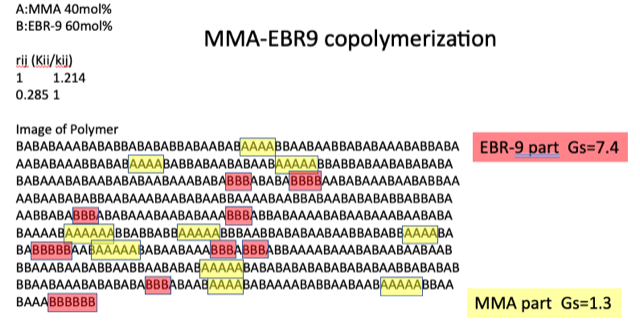Recently I have been receiving an increasing number of inquiries regarding old pages of pirika. This time it is about Gs values.
This is part of a talk and class I gave at KAIST in Korea (2014). It’s not just about predicting Gs values, but about using POSEIDON to predict sequences and Hansen solubility parameters to consider the developer.
Data on the number of main chain breaks per 100 eV can be found by looking up polymer handbooks and the like. The equation for predicting it can be found in BigData, and it seems that if you do MO calculations on every single polymer, you can find it.
However, when you look at the details, MO calculation results alone are not enough, and it depends greatly on the crystalline melting temperature of the polymer.
In other words, polymers with high melting temperatures may recombine even after cleavage.
In other words, we are not talking about a single molecule in a vacuum, but a molecular aggregate.
Therefore, we also need a polymer property estimation function using YPB, which is included in HSPiP.
In addition, polymer sequence analysis results are also needed.

Last time I had a sudden inquiry about POSEIDON, it was about a simulation focused on reaction engineering. POSEIDON focusing on polymer sequences is explained here.
Eight years after my talk at KAIST about the need to include this kind of information if one wants to do polymeric MI, there is finally a researcher in Japan who is interested in the subject.
Well, so far, there may not be so much disagreement, but how can we find the reactivity ratio of a new monomer like EBR-9? By far, few people are able to answer the question.
MO calculations to find the transition state and determine the reaction rate constant….
What you get with that is the rate constant for gas phase reactions, and polymers like this can’t be polymerized in the gas phase.
I used to work very hard on MO calculations, but eventually settled on a method of estimating Q-e values.
Pirika has developed and possesses all of the elemental technologies related to these polymers in sequence, which is why it is strong against polymeric MIs.
I’m not sure if they want me to just tell them Gs. I guess that’s a bit unreasonable.
